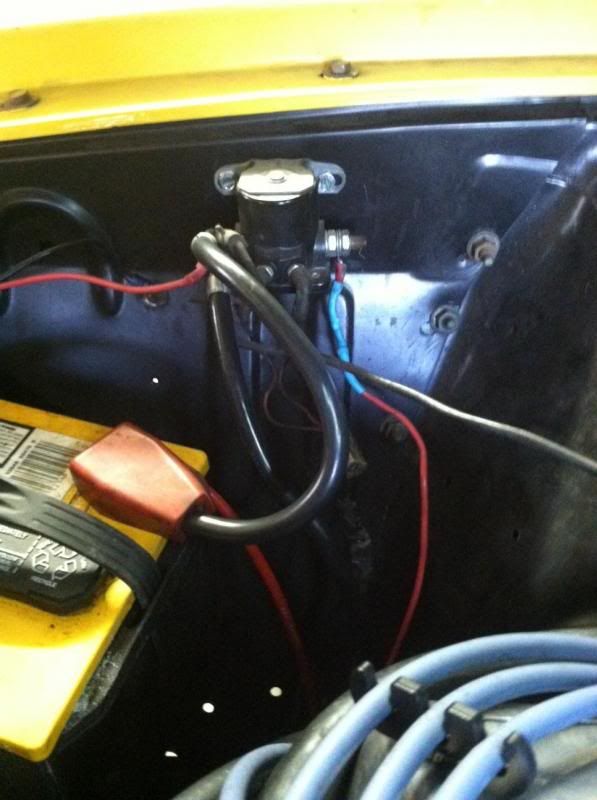- Joined
- Mar 5, 2013
- Messages
- 313
- Reaction score
- 5
- Location
- Carlisle, PA
- My Car
- -Former 70 & 72 Mustang coupes owner.
-69 Torino GT, Formal Roof, 351W, Edelbrock 600 cfm, dual plane high rise intake, long tube headers, AOD trans, dual flowmasters, Pertronix II Billet, 3.5 TRACLOC g/r, 15" Magnum 500s, 100A alt, mini-starter
-70 Mach 1, 351W, FMX
Gurus,
Any idea what would cause my 12V starter wire to melt? I had it zip-tied to the negative starter cable and every spot where it was touching it is melted and had exposed wires. The negative starter cable is untouched.
Background: This is a DBElectrical mini-high torque starter that I've had in my 72 coupe for 2 or 3 months. I noticed in the last 2 or 3 times on the road it was not starting as quick as normal...typically when I stopped briefly and it didn't cool down. I figured I had carburetor drama but it wasn't until I inspected the cable that I saw it was tore up.
I had since installed a 6 gauge wire in it's place (yes, 6 gauge) just in case the electrical gremlims are having a field day. No other wires on my solenoid are bad (coil, electric fan, etc).
Any ideas what could have caused this mess? I'm pretty confident all the grounds in my car are good to go.
-KR



Any idea what would cause my 12V starter wire to melt? I had it zip-tied to the negative starter cable and every spot where it was touching it is melted and had exposed wires. The negative starter cable is untouched.
Background: This is a DBElectrical mini-high torque starter that I've had in my 72 coupe for 2 or 3 months. I noticed in the last 2 or 3 times on the road it was not starting as quick as normal...typically when I stopped briefly and it didn't cool down. I figured I had carburetor drama but it wasn't until I inspected the cable that I saw it was tore up.
I had since installed a 6 gauge wire in it's place (yes, 6 gauge) just in case the electrical gremlims are having a field day. No other wires on my solenoid are bad (coil, electric fan, etc).
Any ideas what could have caused this mess? I'm pretty confident all the grounds in my car are good to go.
-KR























































